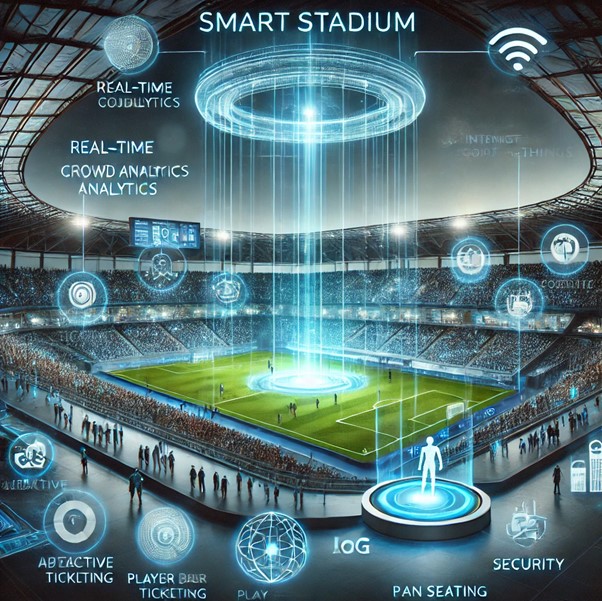Modern sports arenas now integrate advanced sensor networks and data systems, creating new opportunities for fans and organizations like 1xbet betting company to engage with sports in unprecedented ways. These technological advancements transform how spectators experience games and interact with betting markets. The integration of digital technology with physical infrastructure represents a fundamental shift in how sporting events operate.

Sensor networks and enhanced fan experience
Stadium technology now tracks multiple metrics simultaneously, creating rich data environments. Stadium sensor technology innovations demonstrate how these systems monitor everything from crowd density to environmental conditions. These technologies allow for smarter resource allocation and improved safety protocols across large sporting venues.
Current smart stadium features include:
- Crowd flow optimization using movement sensors and predictive algorithms
- Facial recognition entry systems reducing wait times by up to 60%
- Personalized mobile notifications based on location and preference history
- Temperature and humidity control systems adjusted by section occupancy
- Noise level monitoring for enhanced experiences and safety compliance
- Parking assistance through automated guidance reducing entry delays
- Real-time concession stand wait time displays minimizing missed game action
Research from sports technology firms indicates that these innovations reduce operational costs by approximately 15-20% while significantly improving customer satisfaction metrics. Stadium operators report 25% increases in positive feedback after implementing these systems.
Data-driven betting opportunities
The integration of real-time data collection creates unique advantages for on-site attendees. Sports betting technology integration shows how stadium sensors provide exclusive metrics to on-site fans. This data creates new betting markets available only to those physically present at events, establishing a new value proposition for in-person attendance.
Research indicates that in-stadium bettors with access to proprietary data make 17% more accurate predictions compared to remote gamblers. The combination of visual observation and exclusive data feeds creates a significant statistical advantage for attendees. These advantages apply to various bet types including player performance metrics and situational outcomes.
Statistical analysis shows that fans utilizing these in-stadium betting opportunities spend an average of 35 minutes longer at events and report 28% higher satisfaction with their overall experience. This engagement factor has caught the attention of major sports leagues worldwide.
Future developments in stadium technology
The next generation of stadium technology focuses on personalized experiences through integrated systems. Companies developing these technologies aim to create seamless digital environments where fans control their experience through mobile applications with minimal friction points.
Upcoming stadium technologies include augmented reality overlays showing player statistics during live play, heat mapping of game flow visible through mobile devices, and personalized audio feeds providing custom commentary options based on user preferences.
Studies show that stadiums with advanced technology integration see 24% higher attendance rates and 31% increased concession spending. The data demonstrates clear financial benefits for venues investing in these systems, with typical return on investment periods of 2-3 years.
The convergence of physical attendance and digital enhancement creates unique value propositions for sports fans. Research indicates that younger demographics particularly value these technological integrations, with 73% of fans under 35 rating them as “very important” to their attendance decisions. Stadium operators increasingly view technology as a critical component of their business model. The collection and utilization of data builds deeper connections with fans while creating new revenue streams through partnerships with various commercial entities. This technological evolution continues to accelerate, with more advanced implementations appearing each season.